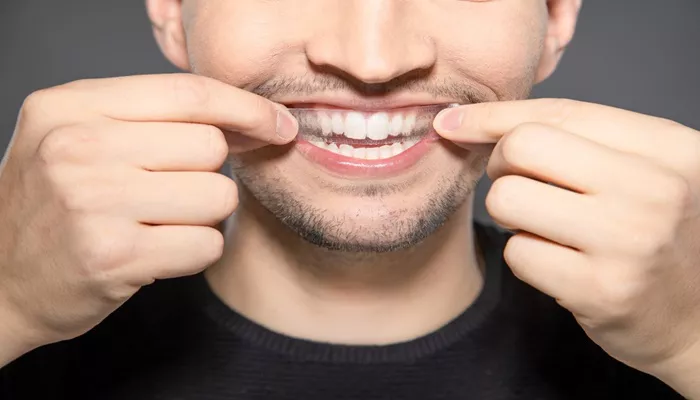Teeth whitening strips are a popular and convenient option for individuals looking to brighten their smiles. These strips are coated with a whitening gel that contains hydrogen peroxide or carbamide peroxide, which helps to remove stains and discoloration from the teeth. One common question among users is, How long does it take for teeth whitening strips to take effect? This article will explore the effectiveness of teeth whitening strips, the factors that influence the results, and a detailed timeline of what to expect.
What Are Teeth Whitening Strips?
Teeth whitening strips are thin, flexible pieces of plastic that are coated with a whitening gel. They are designed to adhere to the surface of your teeth, allowing the whitening agent to penetrate the enamel and break down stains. Whitening strips are available over-the-counter and come in various brands, each with different formulations and concentrations of active ingredients.
How Do Teeth Whitening Strips Work?
Teeth whitening strips work through a chemical reaction that occurs when the whitening agent comes into contact with the teeth. The active ingredients, usually hydrogen peroxide or carbamide peroxide, penetrate the enamel and dentin layers of the teeth. Here’s how the process works:
Stain Breakdown: The active ingredients in the whitening gel break down the chromogens (colored compounds) that cause stains on the teeth. This process helps to lift surface stains as well as deeper discoloration.
Oxygen Release: As the whitening agent breaks down, it releases oxygen molecules. These molecules interact with the stains on the teeth, further enhancing the whitening effect.
Enamel Penetration: The gel seeps into the porous structure of the enamel, allowing for a more thorough whitening effect.
SEE ALSO: How Much Is Teeth Whitening in Arizona?
Factors Influencing The Effectiveness of Teeth Whitening Strips
Several factors can influence how quickly and effectively teeth whitening strips work. Understanding these factors can help you set realistic expectations for your whitening results.
1. Concentration of Active Ingredients
The concentration of hydrogen peroxide or carbamide peroxide in the whitening strips plays a significant role in how quickly you will see results. Most over-the-counter strips contain between 6% and 14% hydrogen peroxide. Higher concentrations generally lead to faster results, but they may also increase the risk of tooth sensitivity.
2. Duration of Use
The recommended usage duration for whitening strips varies by brand. Most strips are designed to be worn for 30 minutes to 2 hours per application. Following the manufacturer’s instructions is crucial for achieving the best results.
3. Frequency of Use
Many brands recommend using the strips daily for a specific period, typically ranging from 7 to 14 days. Consistent use is essential for maximizing whitening effects.
4. Initial Tooth Shade
The starting shade of your teeth can significantly impact how quickly you will see results. Individuals with more severe staining may take longer to achieve their desired shade compared to those with mild discoloration.
5. Diet and Lifestyle
Your diet and lifestyle choices can affect the longevity of your whitening results. Consuming staining foods and beverages, such as coffee, tea, red wine, and tobacco, can counteract the effects of whitening strips.
Timeline for Results with Teeth Whitening Strips
While individual results may vary, here is a general timeline of what to expect when using teeth whitening strips:
Week 1: Initial Application
Days 1-3: After the first few applications, you may begin to notice subtle changes in the brightness of your teeth. Most users report a slight improvement in shade within the first few days. However, the results may not be dramatic at this stage.
Days 4-7: By the end of the first week, many users will see a more noticeable difference. Teeth may appear brighter and less stained. If you are using a higher concentration strip, you may notice results even sooner.
Week 2: Enhanced Results
Days 8-10: During this period, the whitening effects become more pronounced. Users often report a significant improvement in the overall whiteness of their teeth. The enamel may appear more luminous, and surface stains should be visibly reduced.
Days 11-14: By the end of the second week, most users achieve their desired level of whiteness. However, it is essential to follow the instructions and not exceed the recommended usage duration to avoid potential side effects.
Potential Side Effects of Teeth Whitening Strips
While teeth whitening strips are generally safe, some users may experience side effects. Understanding these potential issues can help you make informed decisions about your whitening regimen.
1. Tooth Sensitivity
One of the most common side effects of teeth whitening is increased tooth sensitivity. This sensitivity can occur during or after the whitening process and may manifest as discomfort when consuming hot or cold foods and beverages. If you experience sensitivity, consider the following tips:
Use a Desensitizing Toothpaste: Switching to a desensitizing toothpaste can help alleviate discomfort.
Limit Use: If sensitivity persists, reduce the frequency of use or take a break from whitening until sensitivity subsides.
2. Gum Irritation
Some users may experience gum irritation due to the whitening gel coming into contact with soft tissues. To minimize this risk:
Apply Carefully: Ensure that the strips are applied only to the teeth and not the gums.
Rinse After Use: Rinse your mouth with water after removing the strips to help remove any residual gel.
Conclusion
Teeth whitening strips can be an effective and convenient way to achieve a brighter smile. While results can vary based on several factors, most users begin to see noticeable improvements within the first week of use, with optimal results typically achieved by the end of two weeks. By understanding how teeth whitening strips work and following best practices, you can enhance your whitening experience and enjoy a radiant smile.

